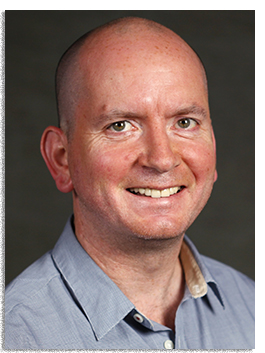 Editor’s Note: Tom Enright is VP Analyst, Gartner Supply Chain Practice
Editor’s Note: Tom Enright is VP Analyst, Gartner Supply Chain Practice
Consumers today have many choices when it comes to where and when they shop and increasingly are prioritizing sustainability in their decision. For retailers, this means responsible retailing can no longer be viewed as an expensive inconvenience. It’s now a mainstream requirement and must be incorporated into their supply chain order fulfillment operations.
As the circular economy takes root globally, retail supply chain leaders need to consider ways to embed consumer demands for sustainability into the supply chain’s so-called last mile — the final stage of order fulfillment between the optimal inventory holding location and the time the package is delivered to the buyer’s door or picked up by the consumer.
Many retailers are addressing this by enabling customers to choose last-mile options for packaging and delivery based on their sustainability preferences. Most consumers want the delivery process to be carbon-neutral and are willing to wait extra days for their order to be delivered, consolidated with other outstanding orders or increasingly, prepared to pay more for sustainable packaging.
There are three key activities environmentally responsible retailers should focus on to demonstrate they are responding to the sustainability concerns of their customers.
1. Provide more sustainable delivery speeds
Consumers don’t always need their orders fulfilled as instantly as retailers think they do. Buyers are open to alternatives, especially when presented with environmental impact information.
For example, the planting of trees in exchange for a carbon-reducing delivery method is a highly effective incentive for consumers to wait longer for package delivery. For retailers, the extra lead time enables better inventory utilization across the supply chain.
2. Incorporate recyclable packaging
Numerous consortia, foundations and alliances have emerged in recent years to help organizations navigate the challenging environment of legislation, technology and post-use options concerning packaging. Develop a relationship with these groups as the complexity of circular economics and new packaging technologies is too vast for any individual organization to tackle alone.
There are numerous ways organizations are innovating to support sustainable packaging. For example, one company aims to reduce ocean waste by buying plastic from consumers and selling it to manufacturers to reuse. Another provides reusable totes for consumer home delivery and recycling of empty plastic containers.
3. Accept “re-commerce” as a part of sustainable retailing
Consumers are increasingly rejecting the throwaway culture. This creates a market for what is being termed “re-commerce.” Many retailers — particularly sellers of apparel, footwear and accessories — offer services enabling consumers to donate or resell their unwanted items rather than consign them to landfills.
The list of companies reselling or recycling used clothing is expanding rapidly. It includes established retailers such as REI, H&M, Patagonia and Primark, as well as new online players such as Poshmark, The RealReal and Kidizen. Research shows that within the next 10 years, the resale market will exceed $80 billion in value, outpacing fast fashion’s estimated value of $43 billion.
Now is the time for action. Retail supply chain leaders need to begin by really listening to consumers’ environmental concerns about how orders are delivered and then take steps to demonstrate how they are working to protect the environment and address concerns about sustainability.
SC
MR


Latest Supply Chain News
- Survey reveals strategies for addressing supply chain, logistics labor shortages
- Israel, Ukraine aid package to increase pressure on aerospace and defense supply chains
- How CPG brands can deliver on supplier diversity promises
- How S&OP provides the answer to in-demand products
- AI, virtual reality is bringing experiential learning into the modern age
- More News
Latest Podcast

 Explore
Explore
Business Management News
- Survey reveals strategies for addressing supply chain, logistics labor shortages
- How CPG brands can deliver on supplier diversity promises
- How S&OP provides the answer to in-demand products
- AI, virtual reality is bringing experiential learning into the modern age
- Tips for CIOs to overcome technology talent acquisition troubles
- There is still work to do to achieve supply chain stability
- More Business Management
Latest Business Management Resources

Subscribe

Supply Chain Management Review delivers the best industry content.

Editors’ Picks





